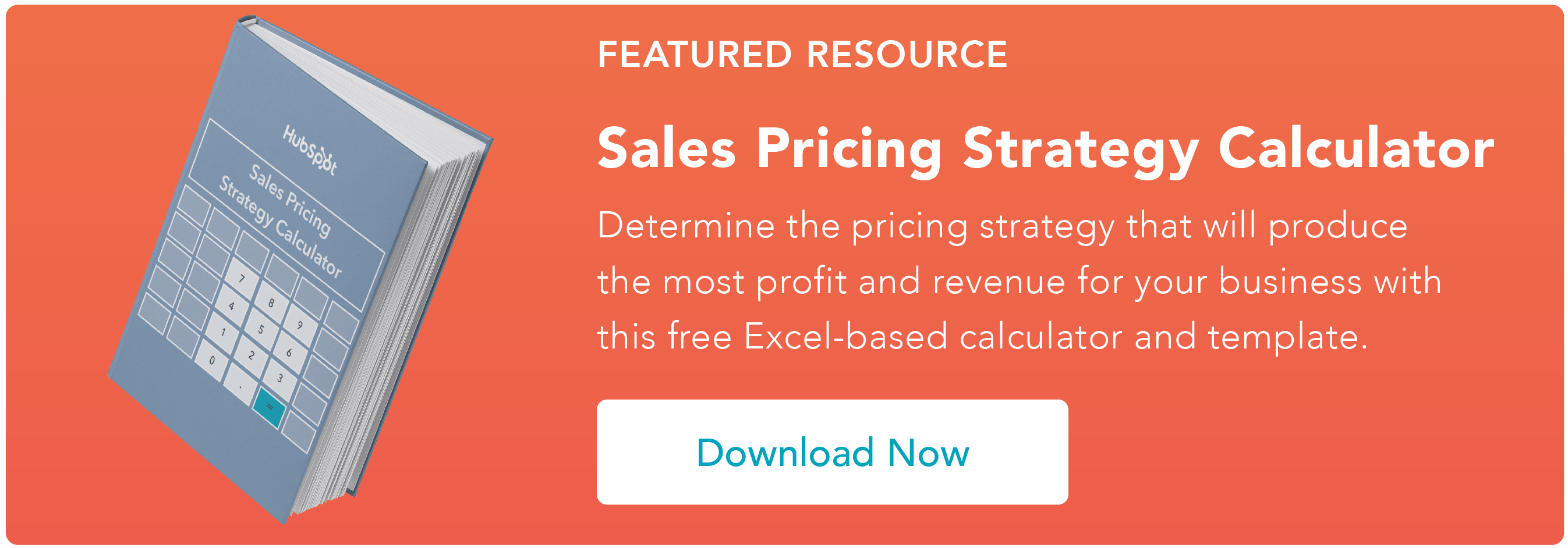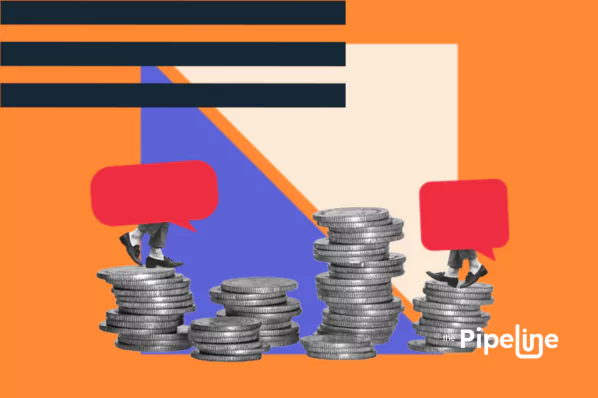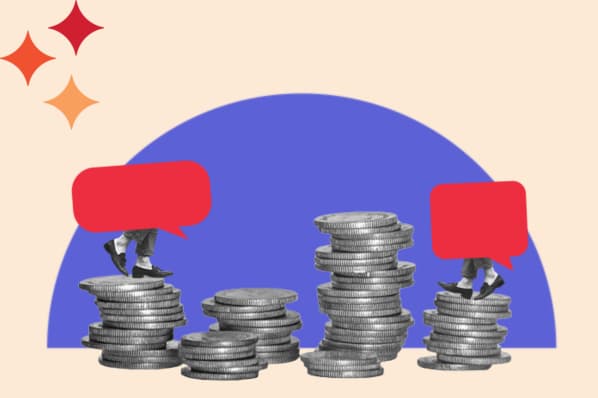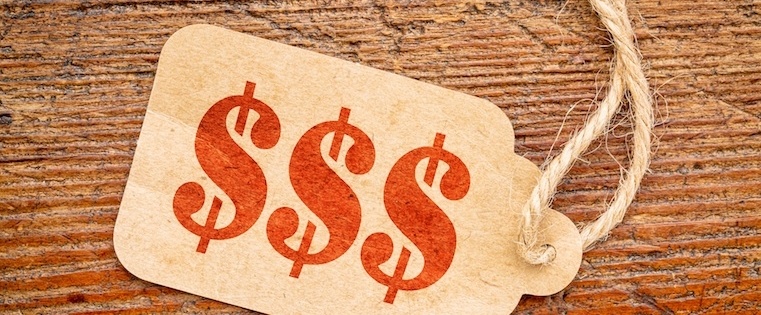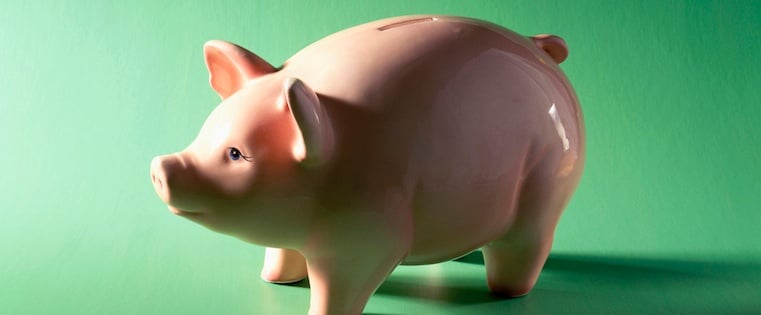Much has been said about negotiation tactics when trying to buy something, but what about when you’re the seller?

How can you negotiate price as a seller? Do you cave? Or do you stand your ground? What are the best practices to get the most profit on your products?
This article will cover how to negotiate price as a seller and four of the best responses to buyers who always want to negotiate and ask for “a better price.”

But first, let’s see why sellers usually end up selling at cut-rate prices (at least from their end).
The Problem: The Seller Often Caves
In the 1970s, researchers studied the effect of a seller’s ability to deviate from the list price. They suspected sellers with higher pricing authority would close better deals. Because their commissions were based on margin, it was in the seller’s best interest to close the best deal possible with each buyer.
However, the sellers with the highest pricing authority had the lowest sales and profit performance. In fact, “high authority” sellers had 11% lower average margins and 13% fewer sales per seller than sellers who had low authority to negotiate on price.
The study identified two probable culprits: buyer tactics and seller behavior.
The bottom line? Sellers cave too often, especially when the price differential is close. And this often leads to:
- Bad deals for sellers
- Sellers setting a precedent for price concessions
- Diminished results for sellers meeting their revenue and margin targets
Bad deals aren’t just about price dropping, either.
There are contingencies, cancellation terms added, payment terms extended, and additional product and services requests.
These factors leave sellers continuously chasing quarterly hurdles and annual quotas. And buyers know this and sometimes take advantage of it.
Then, it becomes emotional. Sellers have a sense of urgency and anxiety, making it difficult to think straight.
When you, the seller, becomes anxious, it affects how you approach sales negotiations, changing how buyers interact with you.
Let’s say you’ve been speaking with a prospect for a few months about your CRM technology, which might take longer than usual since Covid-19 started. You’ve had several conversations about their frustrations with their current provider.
They’ve seen your software in action and seem impressed, and you’ve gotten as far as drawing out a preliminary agreement. But then, you get on the phone and hear, “The price is too high.”
If your first response is, “Well, what’s your budget?” you’ve opened the door for them to suggest an amount. That’s when the haggling begins.
The Solution: Be Ready to Trade
In pricing negotiations, you must ensure you get something for whatever you give. That means being ready to trade.
Remember rule number five in Six Essential Rules of Sales Negotiation: Trade. Don’t Cave.
The best negotiators can uncover new possibilities and alter the scope of an agreement to add more value. But how? Here are a few responses to practice.
How to Negotiate Price as a Seller: Examples to Help you Make More Profit
- Seek out the key decision-makers
- Be Confident
- Offer a single discount option
- Know when to stop
- Make your product’s value clear
- Allow prospects make the first offer
When buyers bring up issues related to your pricing or something else, here are some best practices and examples to help you make the most of the negotiations.
1. Seek out the key decision-makers
If you sell a product that allows room for negotiations, it’s best to seek out and speak directly to the key decision-makers.
Negotiating with someone who has little or no influence in the buying process is a waste of time and effort. What is more, it’s likely the person you’re supposed to negotiate with in the first place might ask for a price lower than what you might have already agreed upon.
So perform your due diligence and get in front of the key influencers and decision-makers before naming a price.
2. Be Confident
Put yourself in your buyer’s shoes. Imagine you’re trying to buy something from a seller with a shaky voice. You’ll likely feel you can haggle your way to a lower price.
Your prospective buyers, like you, understand non-verbal cues too. That means if your body language or tone of voice exudes nothing but confidence, they’ll feel they can take advantage of you.
While you want to be confident, it’s also crucial to not come off as salesy or cocky, as that would turn people off.
3. Offer a single discount option
Granted, there might be times when you can offer a discount on your products, but consider all factors before choosing an arbitrary percentage off.
Rather than opting for 30%-70% off, stick to a single discount that still allows you to earn a profit.
4. Know when to stop
Of course, prospective buyers would rather get a product for free than pay for it, but your business won't make money that way. As the owner of a for-profit business, you need to set limits and know when to stop accepting offers — especially when they’re lower than what you’re asking.
If you agreed to every discount or price drop a buyer offered, your profit margins would be negligible if not negative. And it won’t be long before you run out of business.
5. Make your product’s value clear
As a seller, it’s vital to make prospective buyers see and understand what they stand to gain from buying your product or service.
Since most buyers are short-sighted — only thinking of the current price —, it’s your responsibility to show them what they can gain over time, how much they get to save, and any other add-ons that come with your product.
6. Allow prospects make the first offer
When you allow prospects to make the first offer or speak first, you’d be able to know who you’re dealing with and the challenges they might be facing. All of this puts you in a better position regarding negotiations.
After listening, you’d be able to recommend the exact solution they need. You’d also be able to estimate their budget even before you name your price. And who knows, they might even have a budget large enough to accommodate your price without haggling.
But what happens when a prospective buyer says your price is too high?
Best responses to “I’m going to need a better price.”
Pricing objections are tricky because they’re seldom what they appear to be (i.e., they're rarely because your product is too expensive).
Here’s a brief guide to determine what your buyer is really saying when you hear, “The price is too high”:
1. “Wow, that’s a lot. Can we do it for less?”
This comes from the buyer who always asks for a price reduction because it’s worked in the past. They think it can’t hurt for them to ask. Whatever price you give them, their first response is always to whack it back.
Your response here should be firm. Instead of caving and asking their budget, explain why you’ve presented the price you have. Say, “The cost of this solution encompasses best-in-class customer service and highly trained and experienced support 24/7.”
“We know we’re not the cheapest solution available, but we are the best — and that’s a claim backed up by winning the ‘Best Customer Service’ award three years in a row.”
You’ve explained why you can’t and won’t budge on price by highlighting the value of your product — and that’s something a prospect can’t argue.
2. “It costs too much. Money is going to be a problem.”
Perhaps the buyer can’t justify spending XX% more, or they just don’t see the impact of paying more for a higher quality product/service. You might respond with,
“I understand budgets are tight. I could rehash the ROI of our product — or I could put you in touch with a company that had similar budget constraints but saw huge gains in revenue upon implementing our solution. Would you like that?”
Sharing a happy client with a similar background could give them the encouragement they need to bite the bullet and sign the papers.
3. “I received other proposals, and your price is the highest.”
If you’re familiar with the competitive landscape, you should know if this is true or not. Regardless, your prospect is likely using this as a bargaining chip to bring your price down.
This is another scenario in which explaining why you’ve priced your product the way you have can be helpful in highlighting the value of your offer.
If they’re still not convinced, offer them an integration or an extra month of onboarding support at a reduced rate. This increases their perceived value without lowering the actual value of your initial offer.
4. “It’s too much money. Call me back if you can go lower.”
This might still be your prospect bluffing, but, ultimately, you must hold your ground. After all, as a modern salesperson, you’re trying to solve for the customer's best interest, which sometimes means walking away.
If your prospect truly can’t afford your offer, it’s not in their best interest to sign with you right now. Say:
“I completely understand. Would it be alright if I give you a call in six months to see if your budget is more accommodating to this solution?”
This keeps the door open and keeps you from appearing pushy or desperate — two things that immediately diminish your bargaining power.
Whichever of these approaches you take, don’t cave. Don’t open the door on price just because your prospect knocks.
Ask why they don’t think your product/service is worth your quoted price, and share more information based on their answers.
Then, if they still don’t budge on price — trade, don’t cave!
You can make both strategic and tactical trades. In strategic areas, you can change:
- The solution set and scope
- Service level agreements
- Offer guarantees
- Performance expectations
In tactical areas, you can change:
- Price
- Volume
- Contract term
- Conditions
- Roles and responsibilities
All of these areas are available to you to change. However, the most crucial concept is never giving anything away for free or just dropping the price.
While preparing a list of trades ahead of time is a tactic, the heart of trading is about mindset, not skill. Don't cave. Always trade for value.
Editor's note: This post was originally published in September 2018 and has been updated for comprehensiveness.
